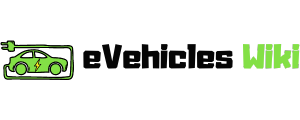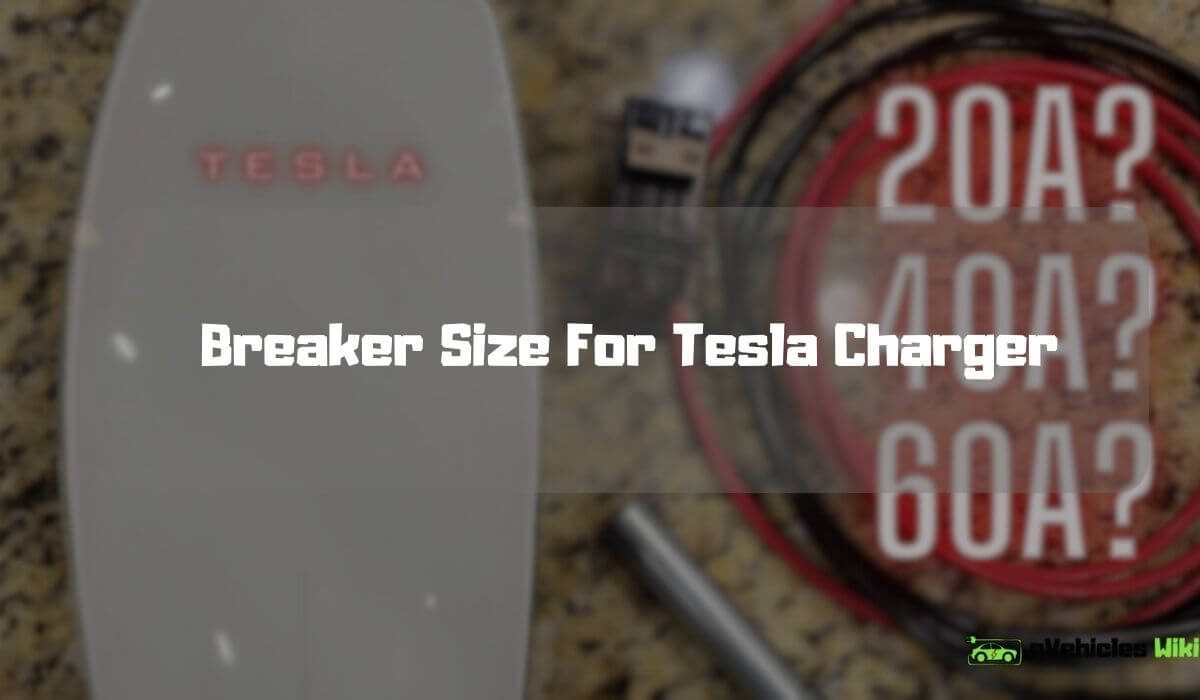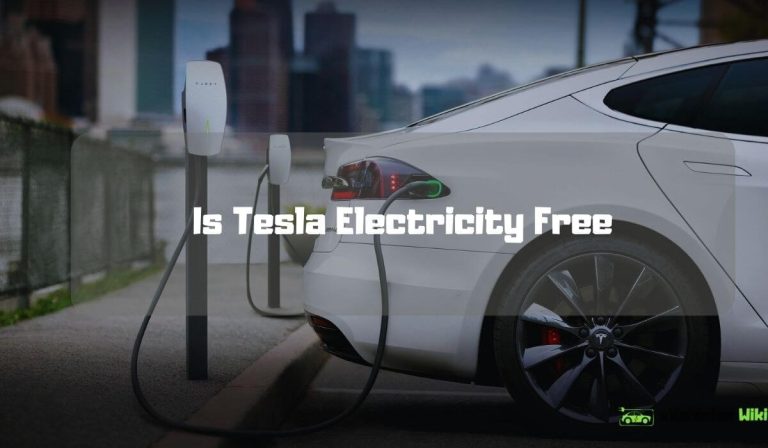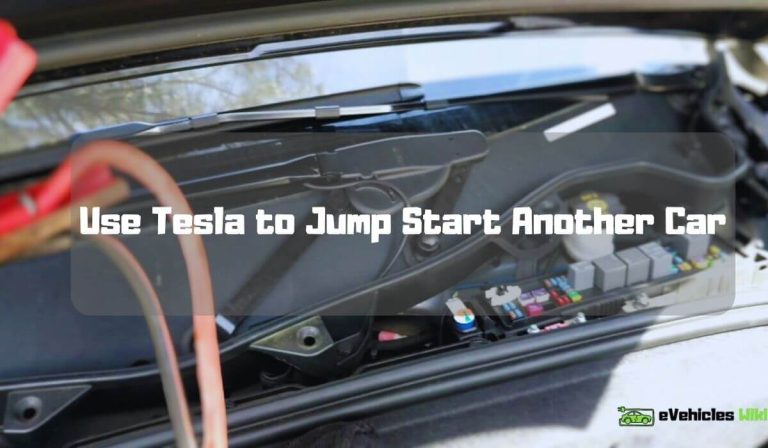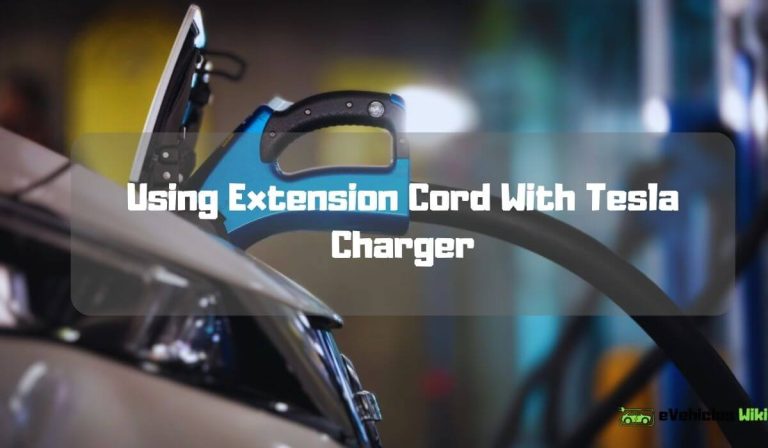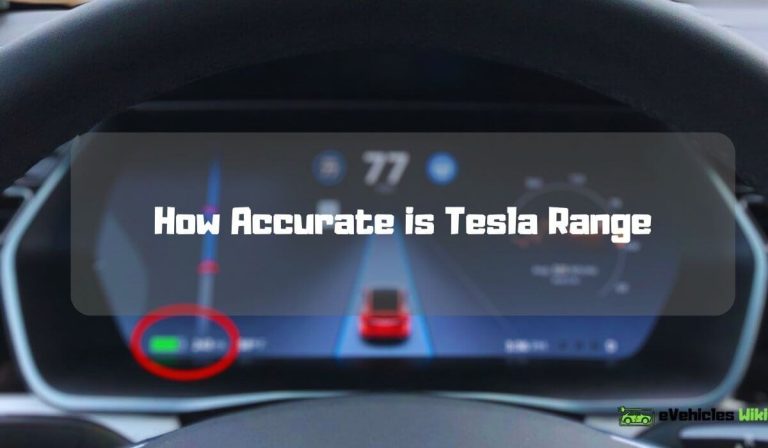What Size Breaker Do I Need for Tesla Charger
The breaker size needed for a tesla charger is 60 amps. This level of amperage requires a 240-volt circuit breaker.
Tesla’s electric cars are becoming more mainstream and popular among environmentally conscious drivers as they offer a cleaner and more sustainable method of transportation. However, to charge these vehicles, specialized charging equipment is required. Home charging systems for tesla vehicles run on either 240 volts or 120 volts, and the type of circuit breaker needed will depend on the vehicle’s charging requirements.
This article will explore the process of determining the correct breaker size for a tesla charger. We will also discuss the importance of choosing the proper breaker size and ensuring that electrical safety measures are observed while operating a tesla charging system.
Factors Affecting Breaker Size
Factors Affecting Breaker Size For Tesla Charger
Are you planning to buy a tesla charger for your home? Are you wondering what size breaker you need? Many factors determine the breaker size for your tesla charger. Let’s explore some of these factors to help you understand what breaker size your tesla charger requires.
Understanding Voltage And Amperage
To determine the breaker size required for your tesla charger, you need to understand voltage and amperage.
- Voltage refers to the amount of pressure of electrical energy in a circuit. Tesla chargers operate on 240 volts.
- Amperage, on the other hand, refers to the amount of electrical current flowing through a circuit. Tesla chargers come in various amperage options, ranging from 15 to 100 amperes.
How Many Chargers Will You Need?
The number of tesla chargers you plan to install in your home is another critical factor for determining the breaker size.
- If you plan to install only one tesla charger, a 60-ampere breaker is usually enough.
- If you plan to install multiple tesla chargers, you will need to adjust the breaker size accordingly. For example, if you plan to install two tesla chargers, each with a 60-ampere rating, you will require a 120-ampere breaker.
What Are The Power Demands Of Your Home?
Another factor to consider is the power demands of your home. The power demands refer to the amount of electricity required to power the various appliances and devices in your home.
- If you have a high-power demand home with many energy-intensive appliances such as air conditioning, electric water heaters, and electric clothes drying machines, you may require a higher breaker size to support your tesla charger.
- Conversely, suppose you have a low-power demand home with energy-efficient appliances such as led lighting and energy-star rated refrigerators. In that case, you may be able to get away with a lower breaker size for your tesla charger.
Many factors affect the breaker size required for your tesla charger. Understanding voltage and amperage, the number of chargers you plan to install, and the power demands of your home is critical in determining the right breaker size for you.
With this knowledge, you’re well on your way to determining the correct breaker size for your tesla charger installation.
Steps To Calculate The Right Breaker Size
If you’re installing a tesla charger at home, you need to make sure you have the right breaker size. An incorrectly sized breaker could cause serious damage to your property and potentially injure anyone nearby. To help you avoid these risks, we’ve compiled a list of key steps to follow when calculating the right breaker size.
Gathering Required Information
Before you get started on the calculations, make sure you have all the relevant information at hand. This includes:
- The voltage and amperage of your charger
- The voltage and amperage of your electrical panel
- The length of the cable that runs from the panel to the charging station
Calculating Minimum Breaker Size
The next step is to calculate the minimum breaker size required for your tesla charger. This involves a straightforward formula:
Minimum Breaker Size = (Charging Amps X 1.25)
For example, if your charger requires 40 amps, the minimum breaker size would be calculated as:
Minimum Breaker Size = (40 X 1.25)
Minimum Breaker Size = 50 Amps
Taking Into Account Future Charging Demands
While calculating the minimum breaker size is a good start, it’s always wise to plan for future needs. If you think you may upgrade to a higher-amperage charger in the future or add additional charging stations, it’s a good idea to choose a breaker that can accommodate those needs.
Deciding On Additional Upgrades
Depending on your home’s electrical setup, installing a tesla charger may require additional upgrades. For example, you may need to install a subpanel or upgrade your entire electrical service. It’s essential to work with a licensed electrician who can assess your needs, provide expert advice, and carry out the installation safely and to code.
With the right information and careful planning, you can ensure a safe and efficient installation for your tesla charger. Remember to consult with a licensed electrician and adhere to all local codes and regulations.
Choosing The Right Tesla Charger
Are you considering investing in a tesla electric vehicle and wondering what size breaker you’ll need for a tesla charger? You’ve come to the right place. This article will help you understand the different types of tesla chargers available and what size breaker you need for each one.
Different Types Of Tesla Chargers
Tesla offers three types of electric vehicle chargers: the mobile connector, wall connector, and supercharger. Below are brief descriptions of each type.
- Mobile connector: This charger comes with every tesla electric vehicle and can be plugged into a standard 120-volt outlet or a higher-powered 240-volt outlet with the appropriate adapter. It’s easy to take on the go and is ideal for emergency charging.
- Wall connector: The wall connector is a stationary charger that can be installed in your home or office. It can charge your tesla up to twice as fast as the mobile connector and can be customized to match your specific needs.
- Supercharger: The supercharger is the fastest charging option for your tesla and is designed for long distance travel. Superchargers are located along major highways and allow you to charge your tesla up to 80% in about 30 minutes.
Compatible Breaker Sizes For Each Charger
The size of the circuit breaker you need for your tesla charger depends on the amperage of the charger you choose. Below are the compatible breaker sizes for each type of tesla charger.
- Mobile connector: 20 amps for a 120-volt outlet and 60 amps for a 240-volt outlet
- Wall connector: 40, 60, or 90 amps depending on the model
- Supercharger: This type of charger doesn’t require a circuit breaker as it’s connected directly to the power grid.
Features And Benefits Of The Different Chargers
Before deciding on which tesla charger to choose, it’s important to understand the features and benefits of each one.
- Mobile connector: This charger is convenient and portable, making it perfect for on-the-go charging situations. It’s also the most affordable charging option and comes standard with every tesla electric vehicle.
- Wall connector: The wall connector is faster than the mobile connector and can be customized to your specific needs. It’s also more durable and weather-resistant, making it ideal for outdoor installations.
- Supercharger: The supercharger is the fastest charging option and is ideal for long distance travel. It’s designed to get you back on the road quickly and efficiently.
Cost And Energy Efficiency Considerations
When deciding on a tesla charger, it’s important to consider both the cost and energy efficiency.
- Mobile connector: This is the most affordable option as it comes standard with every tesla electric vehicle. It’s also energy efficient, but not as efficient as the wall connector or supercharger.
- Wall connector: The cost of the wall connector ranges from $500 to $900, depending on the amperage and customization options you choose. It’s also more energy efficient than the mobile connector.
- Supercharger: Supercharging is free for tesla owners who purchase the supercharger package with their vehicle. However, there is a cost for non-tesla electric vehicles. Superchargers are also the most energy efficient option.
Choosing the right tesla charger depends on your specific needs and preferences. Consider your charging location, frequency, and cost when making your decision. With this knowledge, you can confidently choose the perfect tesla charger to complement your electric vehicle.
Safety Precautions When Installing A Tesla Charger
Importance Of Following Local And National Electric Codes
It is essential to adhere to local and national electric codes when installing a tesla charger in your home. Not following these codes can result in serious safety hazards for you and your property. Here are a few reasons why it is so important to follow electric codes:
- Electric codes help ensure that the installation is safe and meets specific requirements.
- These codes ensure that the charging system is installed correctly and safe to use.
- Following electric codes guarantees a standard of safety and quality for the charging system.
Do-It-Yourself Installation Vs. Hiring A Professional Electrician
When it comes to installing a tesla charger, you have two choices: do-it-yourself or hire a professional electrician. Each approach comes with its own advantages and disadvantages. Before you decide on which option to choose, it’s essential to weigh the pros and cons.
Do-it-yourself installation:
- Diy installation can save you money on installation costs.
- However, diy installation requires specific knowledge and skills to install the charging system correctly.
- It can take up a considerable amount of your time and effort to install the system.
Hiring a professional electrician:
- A licensed electrician has the knowledge and expertise to ensure that the installation meets safety and electrical requirements.
- Professional installation guarantees that the system is correctly and safely installed, reducing the risk of fire, shock, or other hazards.
- Hiring a professional electrician saves you time and effort, and they also offer warranties and repairing services.
Safety Tips For Handling Electrical Components
When installing a tesla charger, you must follow safety precautions as electrical components can be dangerous to handle if you don’t know what you’re doing. Here are some safety tips to follow when handling electrical components:
- Before beginning installation, ensure the power supply is off.
- Wear protective gear, such as gloves and goggles, to prevent electrical shock.
- Double-check the voltage level and compatibility of the electrical components that you are installing.
- Ensure that each electrical connection is secure, appropriately insulated, and correctly grounded.
- When installing the charger, always use insulated tools.
- Avoid touching any electrical components with wet hands or standing on a wet surface to prevent electrocution.
- If you’re uncertain about any step in the installation, hire a licensed electrician to complete the installation.
Remember, the safety of you and your property is crucial and should never be compromised to save time or money. Always follow electrical codes and best practices when installing a tesla charger.
Scheduled Maintenance Guidelines
As a tesla owner, you want to ensure proper maintenance of your charging system to keep it performing at optimal levels. Scheduled maintenance is essential in enhancing the lifespan and durability of the system. In this section, we will discuss the different maintenance guidelines you should follow for keeping your tesla charger in tip-top shape.
Routine Cleaning And Inspection
To guarantee that your tesla charger is functioning efficiently, maintenance should always start with a routine cleaning and inspection of the system. Follow these tips to ensure a successful clean and inspection:
- Use a clean, damp cloth to wipe the charger down carefully.
- Check the charger for any physical damages or scratches that may have occurred during daily use.
- Inspect for any loose connections that may have occurred due to movements or vibrations.
- Ensure that the cooling vents are clean and free of obstructions.
- Check for any foreign objects or debris that may have accumulated.
Checking Wiring Connections And Charger Status Lights
Tesla chargers rely on various electrical wiring and connections to operate correctly. Routinely checking for damaged or loose connections can help mitigate potential future issues. Here are some ways to check for proper wiring connections:
- Ensure that all wiring connections are tight, secure, and free from any signs of wear and tear.
- Inspect all electrical wires for any damage or corrosion.
- Check for incorrect wiring or loose connections that may affect the entire system’s performance.
Also, check the charger status lights regularly, as they can provide insight on your charger’s operations.
- Green light: Indicates proper charging and that the battery is close to being fully charged.
- Flashing green light: Tesla charger is charging.
- Amber light: Indicates that the battery is charging and becomes solid once it is fully charged.
- Red light: Indicates an error in charging. If this light appears, check the charger power source and ensure it is correctly plugged in.
Replacing Worn-Out Parts
Tesla chargers are subject to wear and tear due to daily use. As a result, it’s essential to replace worn-out parts to ensure optimal functionality. Here are some parts to check and replace if necessary:
- Charging cable: These wear out due to daily use and external factors such as weather conditions.
- Plugs: With time, the electrical connections may suffer wear and tear, which can cause the plugs to stop functioning well or show signs of instability.
Follow these simple yet effective scheduled maintenance guidelines to keep your tesla charger working correctly for longer. This will save you time and money in the long run while enhancing your vehicle’s performance.
Troubleshooting Common Issues
Tips For Diagnosing Charging Problems
Tesla charging issues can be frustrating, but before you start worrying about your tesla’s battery, there are a few things you can do to troubleshoot charging issues. Here are some tips for diagnosing charging problems:
- Check the tesla charging cable for any visible damage or wear and tear.
- Check the charging station to ensure that it’s on and properly connected to your vehicle.
- Try charging at a different charging station to see if the issue persists.
- Check the charging port on your tesla to make sure it’s not obstructed by debris or other objects.
Error Messages And What They Mean
When it comes to charging your tesla, it’s not uncommon to run into error messages. Here are some common error messages and what they mean:
- “charge cable fault” – there’s an issue with the charging cable, and it needs to be replaced.
- “unable to charge” – this message can indicate a problem with the charging station or a communication issue between your tesla and the charging station.
- “charge port open” – the charge port is open and needs to be closed before charging can begin.
- “charging cable not detected” – there’s an issue with the charging cable connection, and it needs to be checked.
Addressing Charging Interruptions
Intermittent charging interruptions are a common issue that tesla owners may face. Here are some steps you can take to address charging interruptions:
- Reset the charging station by unplugging it and plugging it back in.
- If charging at home, check your home’s electrical panel to ensure that the circuit breaker hasn’t tripped.
- Adjust the charging amperage via the touchscreen display to avoid overloading the circuit.
- If the issue persists, contact tesla support for further assistance.
Remember, charging issues with your tesla are not always a cause for concern. With these tips, you’ll be able to diagnose and resolve any issues quickly and easily.
Recap Of Key Points
Understanding The Importance Of Breaker Size In Tesla Charging
A crucial aspect of owning a tesla electric car is having a reliable charging station at home. The breaker size is an essential factor to consider when installing a tesla charger, as it determines the charging speed and overall performance.
Here are the key points to keep in mind when considering the breaker size:
- The breaker size limits the amount of electricity that flows into the charger. A larger breaker size allows for faster charging speeds.
- Choosing the correct size of the breaker for the charging station is crucial to prevent overloading the system.
- The breaker size required for a tesla charging station depends on the charger type and the electrical capacity of the building.
Factors To Consider Before Installing A Charger
Before choosing and installing a tesla charger at home, several factors should be taken into consideration to ensure a smooth and safe charging process. Some of these factors include:
- The electrical capacity of the building where the charger will be installed. A professional electrician can help determine if the existing electrical system can support the charger’s electrical requirements.
- The location of the charger. It should be installed in an accessible and safe area, away from moisture and extreme weather conditions.
- The charging needs of the tesla owner. The charger’s power output capacity should be sufficient to meet the owner’s daily charging requirements.
Calculating The Right Breaker Size
Calculating the right size of the breaker for a tesla charging station involves several steps. Here are the key points to consider:
- Determine the electrical capacity of the building. This information is usually available on the electrical panel or can be obtained by a professional electrician.
- Calculate the maximum charging power required by the tesla car by checking the owner’s manual or consulting tesla’s online resources.
- Divide the maximum charging power by the voltage to determine the amperage needed for the charging station.
- Add 25% extra capacity to the amperage computed as a safety buffer.
Choosing The Right Charger Type
Tesla offers two types of chargers for at-home use: the gen 3 wall connector and the mobile connector. Here’s a brief breakdown of each type to help choose the right one:
- Gen 3 wall connector: This charging station allows for the fastest charging speed and is suitable for frequent, everyday use. It can charge up to 44 miles of range per hour.
- Mobile connector: This charger is portable and can be used anywhere with a standard electrical outlet. It provides a charging speed of up to 30 miles of range per hour.
Safety Precautions For Installation And Maintenance
Installing and maintaining a tesla charging station requires utmost caution to prevent accidents and damages. Here are some safety precautions to observe:
- Hire a professional electrician to perform the installation.
- Observe all the manufacturer’s installation and operating instructions.
- Conduct regular inspections, maintenance, and cleaning of the station’s components to prevent damage and ensure optimal performance.
- Do not attempt to repair or modify any of the charging station’s components without professional assistance.
By applying these key points, tesla owners can determine the right size of the breaker for their charging station, choose the right charger type, and ensure safe installation and maintenance.
Frequently Asked Questions On What Size Breaker Do I Need For Tesla Charger
What Is The Minimum Breaker Size Needed For Tesla Charger?
The minimum breaker size needed for tesla charger is 60 amps.
Is It Possible To Use A 30-Amp Breaker For The Tesla Charger?
No, it is not recommended to use a 30-amp breaker for the tesla charger.
What Factors Should I Consider When Installing A Breaker For A Tesla Charger?
The factors to consider when installing a breaker for a tesla charger are the input amperage of the charger, the capacity of the electrical panel, and the existing load on the panel.
Conclusion
Overall, determining the right size breaker for your tesla charger depends on the specific requirements of your vehicle and charging setup. It’s crucial to consider the electrical load capacity of your home and ensure that your breaker and wiring can handle the increased demand that your tesla charger will place on your electrical system.
Consult a licensed electrician to evaluate your home’s electrical system before installation to ensure that you are following proper electrical codes and safety guidelines. By taking these steps, you can confidently make the necessary modifications to your home’s electrical system and enjoy the convenience of charging your tesla at home.
Remember, safety should always come first, so take the necessary precautions and enjoy the benefits of owning a tesla!
